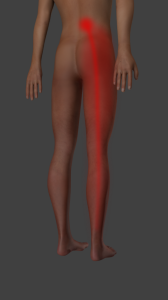by Dr. Demitri Adarmes
An epidural injection is mostly administered to provide spinal pain relief. The injection is placed into the epidural space which is found in the spinal canal running from the neck to the tail bone. This is basically the area that is around the spinal cord and nerves.
Five Things You Need to Know About Epidural Injections
1. The injections can be for used for both diagnostic and therapeutic purposes: Epidural injections may be prescribed for two primary reasons.
- The workers compensation doctor could use the injection for pain relief purposes. The injection contains anti-inflammatory medication which reduces the inflammation and as a result relieves the pain.
- Secondly, the doctor can administer an epidural injection administered for diagnostic purposes. In such cases, the injection is directed around an isolated nerve so as to determine if it is the source of the pain. Epidural injections administered for diagnostic purposes typically contain only an anesthetic. If complete or major pain relief is achieved, that specific nerve is identified as the cause of the pain. This can be very helpful for an injured worker who has sciatica with no identifiable source of pain on imaging studies.
2. You need to be a candidate for the injection: Not everyone is a good candidate for epidural injections. Patients who are on blood thinning medication are not considered good candidates since one of the side effects of this injection is bleeding. Patients with active infections such
as flu or cold also may have to wait until the infection is treated before they can have the injection.
3. Epidural injections are highly effective: These injections are highly successful and about 70 percent of patients receiving them for sciatica pain experience relief. They can be very helpful for an Arizona workers compensation pain doctor attempting to help get an injured AZ or Federal worker back on the job.
4. The numbers of epidural injections you can have in a year are limited. Typically one can receive a series of 3 injections over a period of 6-8 weeks and then need to wait a few months before a second series.
Steroids are used in these injections and one of the major side effects of the injection could be complications due to the steroid medication. One reason why epidural injections are limited is because the drugs could disrupt the natural hormone balance in the body.
5. Epidural injections can be delivered in three ways and these include: interlaminar, caudal and transforaminal methods. That said; all three methods still incorporate the fluoroscopic approach which involves using x-ray guidance.
Caudal injections work very well when more than one nerve root is being pinched. Interlaminar and transforaminal place the steroid medication close to one particular nerve root. All of these procedures are low risk, outpatient and take about 20 minutes.
Why Get Epidural Injections?
Epidural injections can help provide sciatica pain relief brought about by disc herniation, joint cysts, slipped vertebrae, bone spurs and thickening of spinal ligaments. These injections contain cortisone which is a highly potent steroid. Steroids do not treat the condition causing the pain but they do a lot in relieving inflammation and pain hence allowing the body to have improved function regardless of the underlying condition.








Leave A Comment